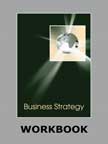Case Details: |
Price: |
| Case Code |
: |
BSTR303 |
For delivery in electronic format: Rs.
300;
For delivery through courier (within India): Rs. 300 + Rs. 25 for Shipping & Handling ChargesThemes
International Business | Globalization Business |
| Case Length |
: |
20 Pages |
| Period |
: |
2002-2008 |
| Pub Date |
: |
2009 |
| Teaching Note |
: |
Available |
| Organization |
: |
Tesco |
| Industry |
: |
Retail |
| Countries
|
: |
China |
Abstract:
|
The 2000s witnessed the entry of several international
retailers into emerging markets. The reason for this could be as much attributed
to saturated markets and cut-throat competition in developed countries as to the
untapped opportunities in emerging markets. Tesco, the UK-based retailer,
operated in several emerging markets in Europe and Asia. The case focuses on the
entry and expansion strategies of Tesco in the Chinese market. Tesco made
several international forays in the 1990s and 2000s. Tesco developed an
international strategy that involved having consistent processes and policies
while making localization efforts that took into account cultural differences
and local preferences.
|
|
The Chinese retail sector offered huge opportunities for
international retailers with the average annual growth in the last 20 years
being around 15 percent. Tesco entered China in 2004, after several successful
Asian ventures including Thailand, South Korea, and Japan. The Chinese market
was a very different market in terms of tastes and preferences from the other
markets that Tesco operated in. Therefore, it decided to enter the country
through a joint venture so that it could learn about the market through its
partner, which had operated in the market for several years. Also, by the time
Tesco entered China, other multinational retailers like Wal-Mart and Carrefour
were already well established in the market.
The case discusses how Tesco faced the challenges in an emerging market like
China by adopting strategies to suit that market. Some of the strategies like
entry and expansion strategies, store management, and localization strategies
are dealt with in detail. The case ends with a discussion on the challenges that
Tesco faces in the country.
Issues:
» Study and analyze the entry of Tesco in an emerging market such as China.
» Examine Tesco's expansion into China.
» Examine how Tesco implemented the localization strategies in China.
» Study how Tesco achieved a balance in implementing its global retailing best
practices and localizing to suit the needs of Chinese customers.
» Examine the challenges faced by Tesco in China.
» Gain insights into the growth and development of the retail industry in China.
Contents:
Keywords:
Globalization, entry, expansion, localization, promotion,
pricing, Beverage market, coffee, China, Starbucks, Starbucks experience
|


